30 Interpersonal Communication in Movies Examples
Dive into the captivating world of Interpersonal Communication in Movies. This guide offers a rich exploration of how communication shapes narratives and characters. From intense dialogues to subtle non-verbal cues, movies provide a plethora of communication examples that reflect real-life interactions. Whether it’s a heartwarming scene or a tense confrontation, understanding these dynamics enhances our appreciation of film as an art form and a mirror to human interaction.
30 List of Interpersonal Communication in Movies
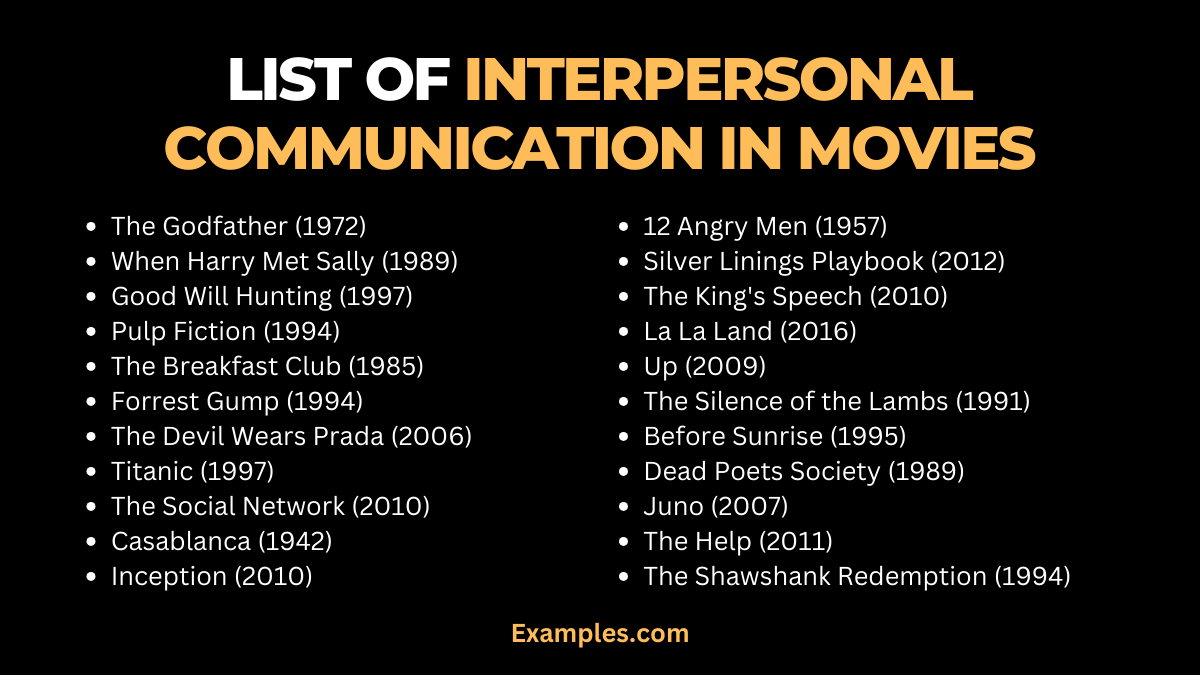
Experience the intricate dance of interpersonal communication in cinema through these 30 iconic movie scenes. Each example demonstrates how dialogue, body language, and emotional expression drive character development and plot progression. From classic romances to modern dramas, these scenes offer a deep dive into the complexities of human interaction, making them not just entertaining but also educational.
- The Godfather (1972): The intense meeting between Vito Corleone and Sollozzo.
Example: “Vito Corleone’s controlled tone and firm body language assert his power without aggression.”
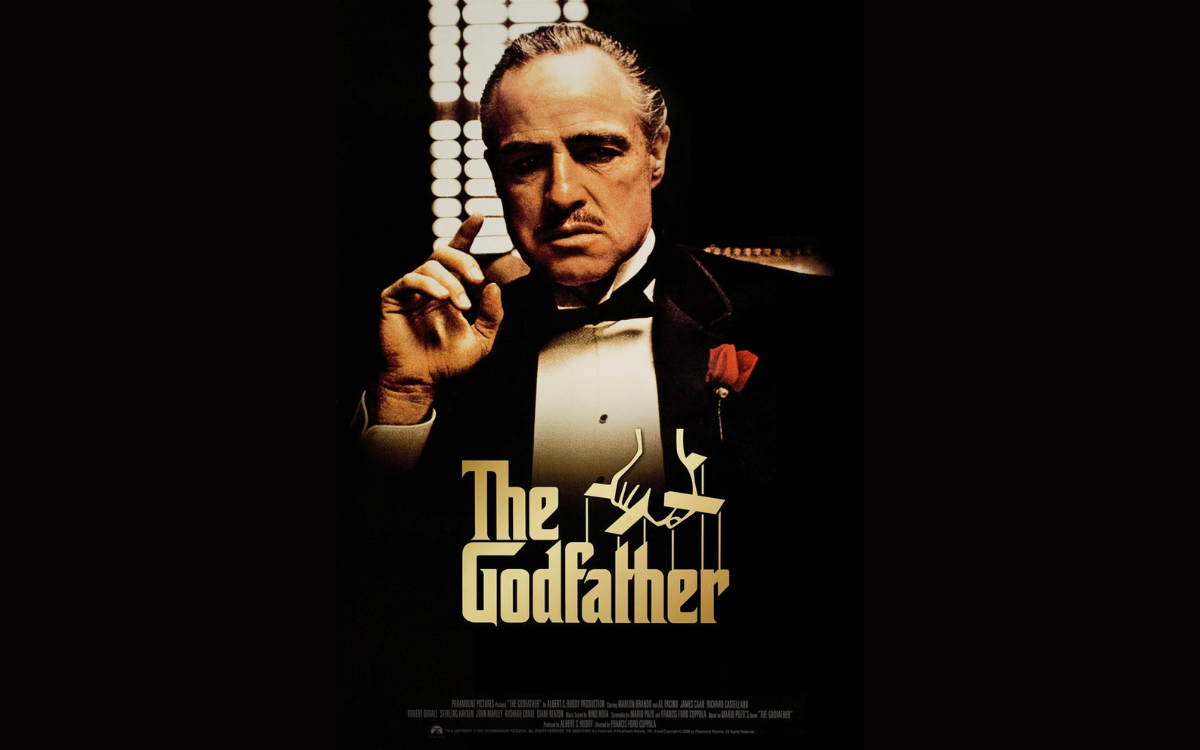
- When Harry Met Sally (1989): The iconic ‘Can men and women be friends?’ discussion.
Example: “The playful banter and genuine curiosity showcase their evolving relationship.” - Good Will Hunting (1997): Will and Sean’s breakthrough session.
Example: “Sean’s empathetic approach breaks through Will’s defensive sarcasm.” - Pulp Fiction (1994): The diner scene with Jules and Vincent.
Example: “Jules’ philosophical monologue contrasts Vincent’s pragmatic responses.” - The Breakfast Club (1985): The group’s sharing session.
Example: “Each character’s self-disclosure fosters a unique bond among them.” - Forrest Gump (1994): Forrest talking to Jenny at her grave.
Example: “Forrest’s heartfelt monologue reveals his deep, unspoken emotions.” - The Devil Wears Prada (2006): Miranda Priestly’s ‘cerulean sweater’ speech.
Example: “Miranda’s tone and delivery assert her authority and knowledge.” - Titanic (1997): Jack and Rose’s conversation on the deck.
Example: “Their open-ended questions and honest answers depict growing intimacy.”
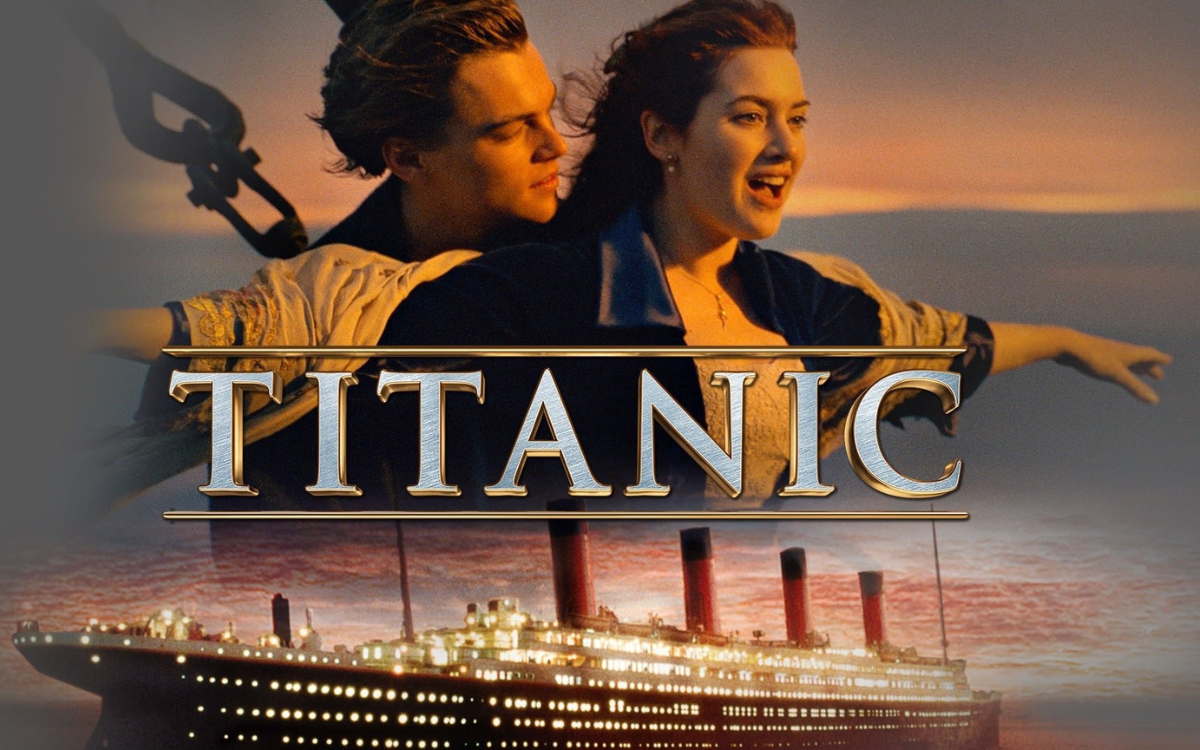
- The Social Network (2010): Mark Zuckerberg’s deposition scenes.
Example: “Mark’s terse replies and body language show his defensiveness.” - Casablanca (1942): Rick and Ilsa’s final goodbye.
Example: “Their bittersweet exchange is a mix of unsaid emotions and stoic acceptance.” - Inception (2010): Cobb’s explanation of dream sharing.
Example: “Cobb uses analogies and simple language to explain complex concepts.” - 12 Angry Men (1957): Juror #8’s convincing arguments.
Example: “He uses logical reasoning and moral appeal in his persuasion.”

- Silver Linings Playbook (2012): Pat and Tiffany’s dance practice sessions.
Example: “Their candid conversations depict a raw, emotional connection.” - The King’s Speech (2010): King George VI’s speech therapy sessions.
Example: “The therapist’s patience and encouragement help the King overcome his stutter.” - La La Land (2016): Mia and Sebastian’s argument about their dreams.
Example: “Their intense exchange reflects their passion and individual aspirations.”
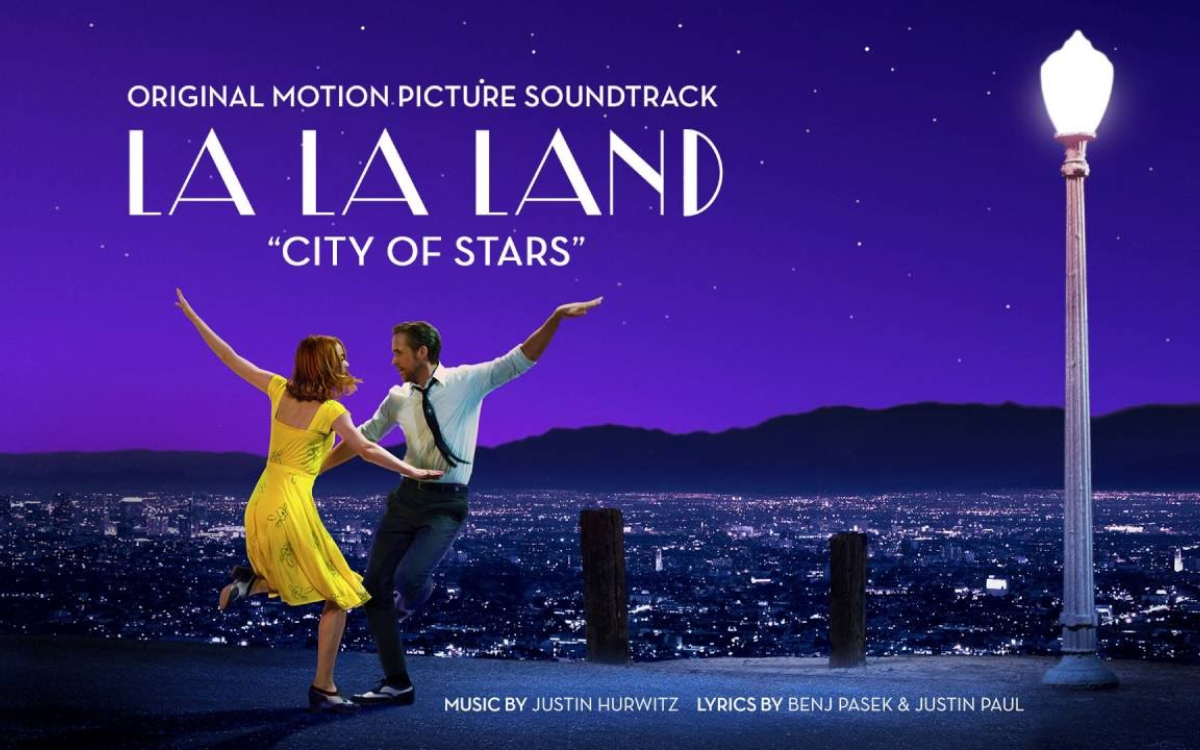
- Up (2009): Carl and Ellie’s silent montage.
Example: “Non-verbal cues beautifully narrate their lifelong love story.” - The Silence of the Lambs (1991): Clarice’s interviews with Hannibal Lecter.
Example: “Clarice’s calculated questions clash with Hannibal’s probing responses.” - Before Sunrise (1995): Jesse and Céline’s philosophical discussions.
Example: “Their dialogue explores deep themes of life and love.” - Dead Poets Society (1989): Mr. Keating’s lessons on poetry and life.
Example: “Keating’s inspiring speeches encourage students to think independently.” - Juno (2007): Juno’s interaction with the adoptive parents.
Example: “Juno’s quirky, honest communication style contrasts with the couple’s more reserved nature.” - The Help (2011): Aibileen’s stories to Skeeter.
Example: “Aibileen’s narratives reveal the struggles and resilience of the maids.” - The Shawshank Redemption (1994): Andy’s messages to Red about hope.
Example: “Andy’s letters to Red symbolize hope and friendship.” - Little Miss Sunshine (2006): The family’s interactions during their road trip.
Example: “The family’s dynamics evolve from chaotic to supportive.” - The Pursuit of Happyness (2006): Chris’s conversations with his son.
Example: “Chris uses simple, heartfelt words to inspire his son.” - My Fair Lady (1964): Eliza Doolittle’s speech lessons.
Example: “Eliza’s transformation is marked by her changing dialect.” - Eternal Sunshine of the Spotless Mind (2004): Joel and Clementine’s fragmented dialogues.
Example: “Their disjointed conversations depict a relationship eroding with memory.” - Moonlight (2016): Chiron’s dialogues in different life stages.
Example: “Chiron’s changing communication style mirrors his personal growth.” - The Intouchables (2011): Driss and Philippe’s candid exchanges.
Example: “Their open and honest dialogue bridges societal gaps.” - Legally Blonde (2001): Elle Woods’ courtroom arguments.
Example: “Elle’s unconventional reasoning showcases her unique intelligence.”
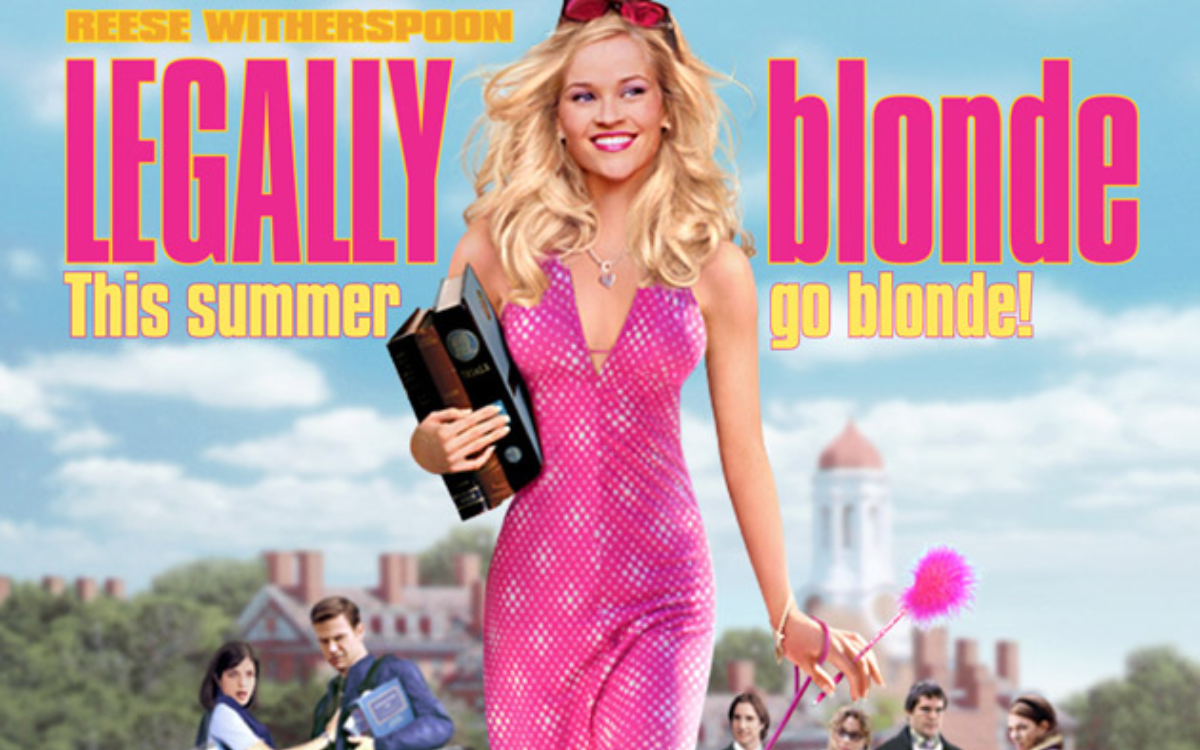
- A Beautiful Mind (2001): John Nash’s interactions as he struggles with schizophrenia.
Example: “Nash’s dialogues oscillate between reality and delusion.”
Principles Of Interpersonal Communication in Movies
- Active Listening: Movies often depict characters who excel in listening, a skill crucial for understanding and empathy.
- Non-Verbal Cues: Facial expressions, gestures, and body language are heavily utilized to convey emotions and intentions.
- Conflict Resolution: Films frequently explore how characters navigate conflicts, highlighting the importance of communication in resolving issues.
- Empathy: Demonstrating understanding and sharing the feelings of others is a recurring theme in character interactions.
- Self-Disclosure: Characters revealing personal information, which fosters trust and deeper connections, is a common narrative tool.
- Feedback: Constructive criticism and feedback are shown as essential for personal growth and relationship development.
- Adaptability: The ability of characters to adapt their communication style in different situations is often portrayed.
- Cultural Sensitivity: Recognition and respect for cultural differences in communication are increasingly depicted in contemporary cinema.
Importance of Interpersonal Communication in Movies
- Character Development: Effective communication is key to developing multi-dimensional characters.
- Plot Advancement: Dialogue and interaction often drive the narrative forward.
- Theme Exploration: Interpersonal communication allows for the exploration of various themes like love, conflict, and growth.
- Emotional Engagement: Good communication draws viewers emotionally into the story.
- Realism: Authentic dialogue and interactions add realism to the film.
- Conflict and Resolution: Communication is crucial in creating and resolving conflicts in the storyline.
- Audience Connection: Relatable communication helps the audience connect with characters.
- Moral and Ethical Dilemmas: Dialogues often present and resolve moral and ethical dilemmas.
Interpersonal Communication in Disney Movies
- Family Dynamics: Disney movies often portray complex family communications, highlighting the importance of understanding and patience.
- Friendship: The development of friendships through communication is a central theme in many Disney stories.
- Hero’s Journey: Effective communication is key to the hero’s personal growth and journey.
- Villain Interactions: The communication between heroes and villains often illustrates the contrast in values and motives.
- Love and Relationships: The evolution of romantic relationships through communication is a recurring plot element.
- Mentorship: Mentor-protégé relationships in Disney movies emphasize the role of guidance and advice.
- Self-Discovery: Characters often discover their true selves through interactions with others.
- Overcoming Adversity: Communication is shown as a tool for characters to overcome challenges and adversities.
Role of Interpersonal Communication in Movies
- Audience Persuasion: Movies use communication to persuade the audience and convey the filmmaker’s message.
- Cultural Reflection: Cinema reflects and influences cultural norms around communication.
- Historical Accuracy: Period films use communication styles to enhance historical accuracy.
- Genre Definition: Different genres use specific communication styles, like the fast-paced dialogue in comedies.
- Character Contrast: Communication styles often contrast characters, like the introvert versus extrovert.
- Social Commentary: Movies use dialogue and interaction to comment on social issues.
- Psychological Depth: Interpersonal communication adds layers to character psychology.
- Symbolism and Metaphor: Dialogues and interactions often contain symbolic and metaphorical meanings.
In conclusion, this guide illuminates the pivotal role of interpersonal communication in movies, highlighting its principles, importance, and varied applications. From classic Disney films to contemporary cinema, the guide explores how effective communication shapes narratives and character development. It serves as an insightful resource for understanding the intricate ways in which interpersonal communication influences storytelling, providing a deeper appreciation of cinematic art.



